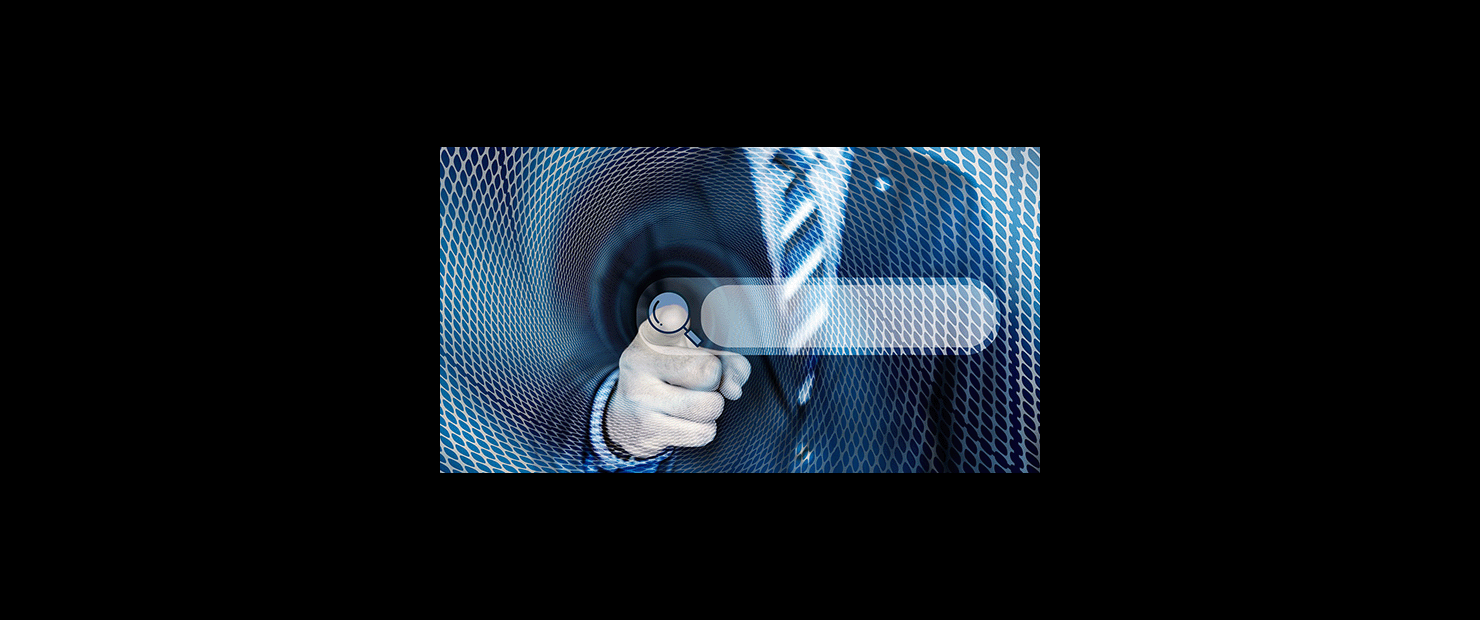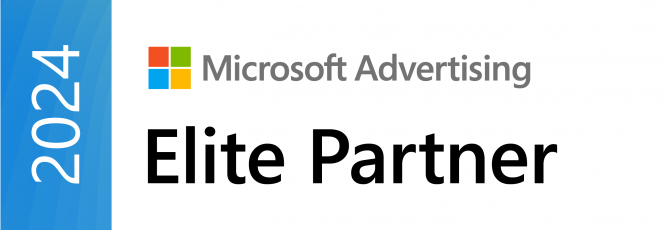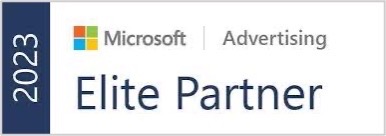
The hidden advantages of Bing Display Advertising make Microsoft Advertising an exciting prospect for companies looking to make their advertising budget go further.
Bing Display Advertising (Microsoft Advertising) has many hidden advantages which make it an exciting opportunity and tool for companies looking to make the most out of their advertising budget.
When most people think of advertising with a search engine, they think of Google. However, with the rebrand from Bing Display Ads to Microsoft Advertising in 2019 (though people still use the two interchangeably, as we will in this article), there’s never been a better time to look at alternative advertising providers. In addition, there are several hidden benefits to using Microsoft Ads that aren’t offered by their competitors.
Bing Advertising has many hidden advantages which are an exciting prospect for companies looking to stretch their advertising budget. You can tap into the Microsoft Search Network and reach new customers whilst only paying for the ones that are relevant to your goal – all for a low CPA rate. Let’s take a look into how you can use Bing Display Ads along with their PPC ad management as an asset to your company.
What are Bing Ads?
Bing Ads (also known as Microsoft Advertising/Microsoft Ads) allow companies to advertise their products and services in the search results of the Bing/Microsoft platform. There is a three-step process for how the service works:
- Customers search – e.g. “leather jackets”
- Customers see your ad – your company’s ad appears within the organic search results
- Customers contact you – your customer clicks your ad and purchases your product.
Of course, many will recognise this as a common strategy for internet marketing. However, it’s the implementation of Bing Advertising that makes it an attractive choice.
Types of Ads

Microsoft Ads give you a variety of ways to reach your audience, in line with your advertising aims. There are lots of different types of display ads for you to choose from, including:
Expanded Text Ads
These are the typical PPC ads you’ll find in your search results. These ads look like organic search results. They’re made up of three components:
- The title
- The ad copy
- The page URL
And, of course, you can shorten and simplify your page URL for display if the actual URL is messy.
Dynamic Search Ads
These ads are specifically designed to target more niche search results. They match your web page with results for similar products and related keywords. Bing Adwords will sometimes create a custom ad to best match the search terms. These ads are also made up of three components:
- The title
- The ad copy
- The page URL
Dynamic search ads are recommended when a brand does not want to do keyword research or assign keywords and brands with a large product line.
Multimedia Ads
These ads use visual designs such as images and infographics to attract a customer’s attention and get them to click. Multimedia ads comprise 5 components:
- The title
- An image
- The ad copy
- A website link
- A call to action
Due to their size and design requirements, multimedia ads are a better fit for businesses with a bigger budget. Microsoft recommends that companies using this method customise their ads with at least 15 headlines, 16 images, and 4 descriptions.
App Install Ads
These ads are similar to the expanded text ads in that they’re designed to look like organic search results. However, instead of directing a customer to a website, they direct the customer to an app store to download the app that’s being advertised. Here are the three components to an App Install Ad:
- The title
- The ad copy
- The app download link
These types of ads are only available on Android and Apple devices.
Product Ads
Product Ads are sponsored product listings that are shown to users searching for related products by Bing Shopping Ads. An example of this would be a customer searching for “long-sleeved tops” being shown Product Ads for cardigans and hoodies. A Product Ad has four parts to it:
- The title
- The product price
- The seller
- An image of the product
These ads are perfect for managed e-commerce services and brands as the ad display is very effective at catching a customer’s attention.
Smart Search Ads
Smart Search Ads give a great example of an edge that the Bing Ads Display has over its competitors. These ads show up in the search bar on Windows computers when a customer is using that search bar to make a Bing search. Here are the four parts needed for a Smart Search Ad:
- The title
- The ad copy
- Any links to associated web pages
- An image of your landing page (if possible)
While these ads are effective, they’re currently limited to the US, the UK, France, Germany, and Canada.
Responsive Search Ads
Responsive search ads are a great way to see what ads your audience responds to. To create these ads, you need to come up with 15 headlines and 4 pieces of ad copy. The headlines and copy are then mix-and-matched by Bing to create targeted ads. Once the ads have run, Bing Ads then ranks the performance of the ads and prioritises the best performers. These ads are made up of:
- The title
- The ad copy
- The page URL
Responsive Search Ads offer new users the opportunity to find out the most efficient method for targeting their audience
Microsoft Audience Ads
Perhaps the most impressive feature is that all Microsoft Audience Ads are placed on articles published by websites within the Microsoft Audience Network. These ads fit right into the content of a page and are made up of four components:
- The title
- The ad copy
- A link to your webpage
- An image
Bing Adwords uses AI and machine learning to target these audience ads based on “consumer intent signals”. It also analyses customers’ search history, demographic information, and browsing history to understand how these signals work and better target their audience.
As you can see, you are given plenty of options to best reach your audience – and there’s no rule saying you must stick to one and only one ad format, try them out to find the ones that work best for you.
Difference between Google Ads and Bing Ads
When most people think of advertising online, they think of Google Ads, so it was inevitable that we would need to have a “Bing Ads vs Google Ads” comparison at some stage. While there are differences between the two, it’s worth highlighting the similarities that they share:
- Both Google and Bing offer a keyword research tool, with board match and negative keyword targeting
- Both show display URLs beneath the headline of their ads
- They each have an 80-character limit in their description field
So in terms of using the two tools, the majority of your day-to-day usage will be the same. Where we start to see a difference is in the numbers:
- Market share (desktop) – Bing has 5.56% compared to Google’s 87.76%
- Market share (all devices) – Bing has 2.48% compared to Google’s 92.03%
- Percentage of clicks from mobile/tablet – According to research by Joseph Johnson at Statista, Bing received 29% of clicks from mobile/tablet users compared with 73% for Google in the 4th quarter of 2021.
These statistics may make it appear that Google is a lot more impressive than Microsoft, however, they are only the numbers and don’t tell the full story. Google has a larger consumer base, but Microsoft Advertising’s main advantage is that it allows you to market to a specific audience. Studies show there are at least 63 million searchers that aren’t reachable through Google Ads – a significant number that your business is missing out on.
When we start to look at the pricing numbers, things get a little more interesting:
- CPA average – Bing Adwords averages 40% less CPA than Google, and users spend an average of 35% more, according to War Room
- CPC averages – $7.99 for Bing Ads, and $20.08 for Google Adwords, according to ReportGarden
While the traffic is often lower on Bing compared to Google, the quality is often higher, resulting in better value for money in terms of CPA.
The Hidden Advantages of Using Bing Ads
When people think about advertising, they tend to think purely in terms of market share and click-through percentage. It’s this thinking that has made Google such a powerhouse in the industry, but when comparing Bing vs Google, there are more nuanced advantages that Microsoft Bing Ads has over its bigger counterpart.
Combined Audiences
When you use Microsoft Advertising, you don’t just get an advertising display on the Bing search engine, you get access to the traffic on other search engines such as Yahoo!, AOL, DuckDuckGo, and all the brands that are within the Microsoft Ads Audience Network. You also get Bing Shopping Ads appearing on searches that customers make through the search bar on their Microsoft desktop/laptop. With access to the whole of this ad display network, you can advertise to at least 63 million users that aren’t reachable with Google Ads.
Daily and Monthly Budget Caps
Rather than being limited to a daily budget cap, the Bing Ads Management Tool allows you to set a monthly cap for your campaign. This gives you the opportunity to launch your campaign at the beginning of the month and stay within your monthly budget with no need to check your daily spending.
Transparency
The Bing Ads Manager will let you break down your advertising data, showing you where your ads perform better and where they perform worse. They will even allow you to stop targeting the areas where your ads aren’t working, allowing you to save money on your campaign. Microsoft Ads are more open about community rules and guidelines, compared to competitors.
Control Search Demographics
One of the ways Microsoft Advertising sets itself apart from Google is the extent to which you can control the demographic that your ads target on the search network. When you use Google, you’re left in the dark in this regard as there is no demographics-based targeting on the search network. However, Bing allows you to minimise or maximise the extent to which your ad reaches different demographics on the search network by adjusting your bids for each one.
Lower Costs + Higher Quality Customers
The Bing PPC is cheaper than Google Adwords, both in terms of the average budget required to run a campaign as well as CPA. Not only that, but the quality of traffic that is being directed to your ads is often higher, with an older, more educated clientele using Bing compared to Google. All of this equates to a better ROI on your marketing dollars.
These are all aspects of an ad service that you may not have initially considered or even been aware of when thinking about Microsoft Ads. While they may not have the reach of Google, these other benefits can give you a more efficient and cost-effective ad campaign.
How to Create Display Ads
So, how do you go about creating a Bing Display Ad for yourself? It’s simple. You can use the ads management tool to import your ready-made ads into Microsoft Ads with your existing Google Adwords. Here’s how to do it:
- Start by clicking on “Import Campaigns” and then “Import from Google Ads”.
- Sign in to your Google Ads account and select the ad campaigns you want to import into Bing Ads.
- Specify which settings you’d like to bring over and schedule automatic imports if you plan on running parallel ad campaigns.
- Click “Import” and your Google Ads will appear in your Microsoft Advertising Account.
If you don’t have ads already made and need to start from scratch, that can be done too! Just follow these easy steps:
- Click on “Campaigns”, then “Create Campaign”, and set your campaign goal.
- Next, you will be asked, “What kind of ads do you want to run for this campaign?”. At this point, you can choose the ad type that’s best for you – such as display network ads.
- Fill in your basic settings and select a daily budget for your campaign.
- Create an ad group, select your audience settings, and add in your text, links, images, and details.
- Set your total budget and add a payment method under the “Accounts and Billings” section.
- Click “Done” and your ad will be activated!
As you can see, not only are Bing Display Ads cheap and effective, but they’re also really easy to use.
Successful strategies
So, you’ve decided that Bing Ads, or Microsoft Ads as they’re now known since the rebrand, are right for you, and you know how to create one – but most importantly, how do you create a successful ad campaign?
One way is to go with something you already know works. If you have a successful ad campaign running in Google Ads, as we’ve just shown above, you can import it straight into Bing Ads and immediately have it working for you.
However, if you don’t have a campaign up and running and you need to create one from scratch, what rules should you follow?
The most important action to take when creating an advertisement is to not skimp on the quality. Both your copy and any images you use must be of the highest standard. Any spelling/grammar errors or blurry pictures are instantly going to turn off potential customers. You can keep an eye on the quality of your ad by checking the Quality Score metric available to you in Microsoft Ads.
Another thing you need to consider is how your target audience may differ from a Google Ad campaign. As already mentioned, Bing users are often an older demographic and, according to studies, are often wealthier and better educated. This means that your planned campaign may need to be altered in order to better appeal to the demographic that will likely see your ads.
Finally, with Bing Display Ads, you can take advantage of in-market audiences, which allow you to reach customers without having to run a complex targeting campaign. Microsoft Ads offer businesses an “intent-based” targeting system that uses AI to create lists of customers who have recently shown an interest in purchasing services/products similar to yours. If you don’t see your industry in its in-market audience categories, then don’t worry, Microsoft is adding new industries all the time.
Microsoft Ads: A Summary
We’ve covered several aspects of Microsoft Ads (formerly Bing Ads) in this article and why they could be right for your business. Not only do Bing Adwords have extensive functionality that in some areas matches and even exceeds Google Ads, but they are much better value for money with a lower average cost and a lower CPA rate.
They’re simple to use and customise, and you can even import ads from Google Ads if you already have a campaign up and running. With Bing Advertising, you don’t just get to display network ads to the Bing search engine users, you also reach Yahoo!, AOL users, DuckDuckGo users, and many more, as several search engines run on Microsoft. As well as that, you also have access to people searching for products using the Microsoft search bar.
With over 63 million users unreachable through Google Ads, isn’t it time you considered Microsoft Ads?
Microsoft/Bing Ads: FAQs
If you still have any questions about Microsoft Ads, here’s where you’ll find the answers:
Is it worth it to advertise on Bing?
Yes! With low costs, high-quality traffic, and the ability to target your audience, it’s worth planning to advertise on Bing. On top of that, by advertising on Bing, you can reach 63 million users that can’t be accessed by Google Ads.
How do Bing Ads work?
Bing Ads work by showing your ads within the customers’ organic search results as long as your ad is relevant to the search terms. The ads work on an auction system where advertisers compete to have their ads shown.
Is using Bing Ads cheaper than AdWords?
On average, Bing Adwords is cheaper than Google Adwords both in terms of the average budget needed to complete a campaign as well as the CPC rate.
What’s the real name of this product? Bing Ads or Microsoft Ads?
Having previously been called Bing Ads until 2019, the real name of this service is Microsoft Ads, although people use the two interchangeably.
Does Microsoft Ads Offer Budget Caps?
Microsoft Ads offers both monthly and daily budget caps for its users.
Where do Bing Ads show?
Bing Ads are shown within Bing search results, as well as search results from Yahoo!, AOL, DuckDuckGo, and many other search engines, as well as results from Microsoft toolbar searches.






